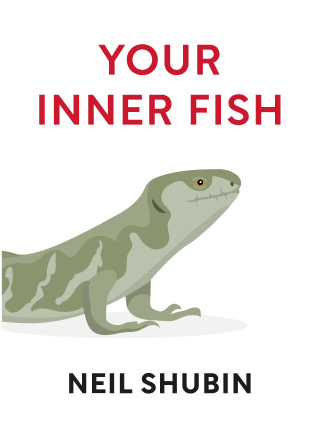

This article is an excerpt from the Shortform book guide to "Your Inner Fish" by Neil Shubin. Shortform has the world's best summaries and analyses of books you should be reading.
Like this article? Sign up for a free trial here .
What does the middle ear do and what is the purpose of the middle ear? How did it develop?
The middle ear is a bone. According to Neil Shubin in Your Inner Fish, the middle ear shows a clear connection to our fish ancestors, especially sharks.
So what does the middle ear do? Keep reading to find out.
What Does The Middle Ear Do?
Our middle ear bones betray our connection with sharks and other bony fish. But what does the middle ear do, and what is the purpose of the middle ear?
Mammals have three middle ear bones, reptiles and amphibians have one, and fish don’t have any. Our three middle ear bones are the malleus, incus, and stapes, and they develop from the gill arches. The malleus and incus develop from the first arch, while the stapes develops from the second arch. Now that you know how the middle ear works, it’s time to ask: what does the middle ear do?
The Malleus and Incus
In 1827, a German anatomist studying mammal and reptile skulls discovered that two of the ear bones in mammals, the malleus and incus, looked like parts of the jaw in reptiles, indicating that the gill arch that formed part of the jaw in reptiles also formed ear bones in mammals. Thus, parts of reptiles and mammals were the same. This was pre-Darwin when they had no concept of evolution, but the implication was that mammals evolved from reptiles. This can also help answer the question “what does the middle ear do?”
In 1913, a paleontologist connected the dots between:
- The theory that the malleus and incus bones moved from the jaw in reptiles to the ear in mammals.
- The discovery that dog-sized South African reptiles with mammal-like teeth also had bones at the back of the jaw resembling mammal ear bones. A series of fossils of the evolving reptile showed that these bones in the jaw got progressively smaller over time and moved toward the ear.
Indeed, the malleus and incus in mammals evolved from reptile jawbones. So mammals ended up with three middle-ear bones (remember, reptiles and other animals had only one). Having three enabled mammals to hear higher-frequency sounds. Improved hearing was developed by repurposing bones originally used by reptiles for chewing. This helped answer the question “what does the middle ear do?” and why.
The Stapes
While two bones in our middle ear came from reptiles, the third ear bone (the stapes) came from fish.
As noted earlier, the second arch produces the stapes in mammals; the second arch also produces a large bone (hyomandibula) connecting the upper jaw to the brain area of fish and sharks. In both species, these two bones—in the mammal ear and shark jaw—are served by the same second-arch nerve, the facial nerve.
Thus, two very different bones in different animals share a common developmental origin and nerve pattern and can answer the question “what does the middle ear do?”
Tracing the hyomandibula from sharks to fish like Tiktaalik to amphibians shows the bone getting progressively smaller and shifting from the upper jaw to the ear (becoming the stapes).
It evolved this way as the first creatures began to live on land and needed to pick up sound vibrations in the air as opposed to in water.
So what is the purpose of the middle ear? The middle ear serves an important purpose to help us hear and understand sounds.

———End of Preview———
Like what you just read? Read the rest of the world's best book summary and analysis of Neil Shubin's "Your Inner Fish" at Shortform .
Here's what you'll find in our full Your Inner Fish summary :
- How your hands and feet are like a fish that lived hundreds of millions of years ago
- How the structure of your head can be traced back to an ancient, headless worms
- What parts of your body are uniquely human






